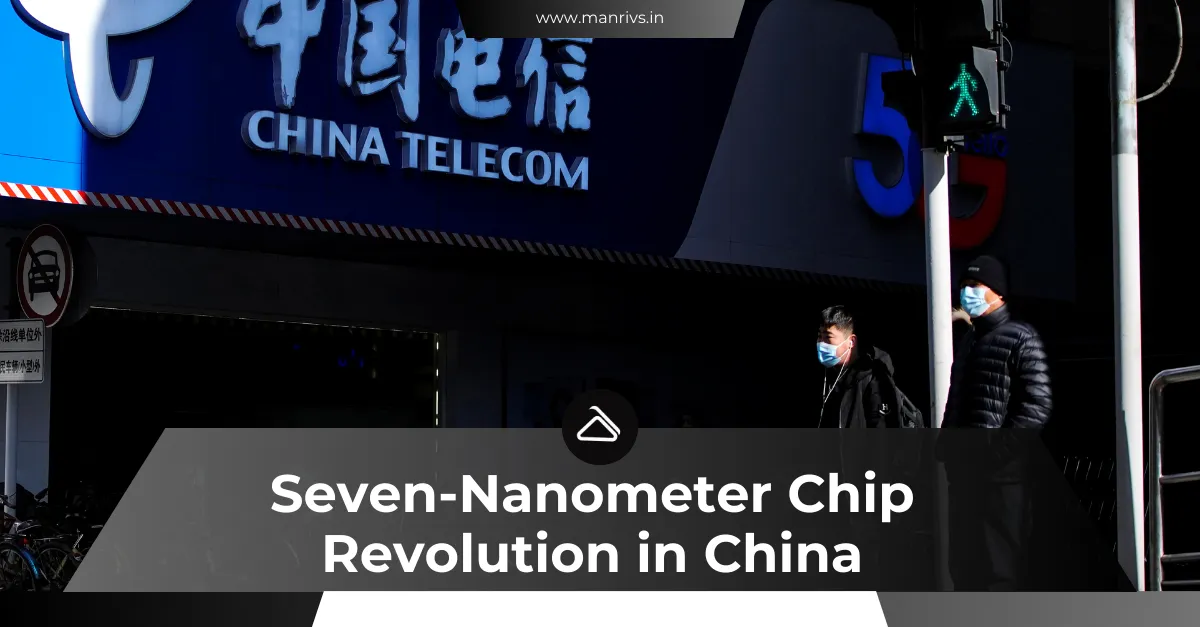China’s telecommunications giant’s attempt to create a seven-nanometer chip reveals a complex web of technology and global repercussions. In recent times, the world has witnessed a dramatic showdown involving China’s telecommunications industry. This intriguing saga revolves around a company accused, and in some cases found guilty, of attempting to manipulate wireless and cellular equipment for a rather ominous purpose – granting the Chinese government unprecedented access to global communications. This article delves deep into this compelling narrative, exploring the events that transpired, the technology involved, and its implications for both China and the global tech landscape.
A Startling Revelation
It all began when the Australians stumbled upon evidence suggesting that this Chinese telecommunications giant was tampering with wireless equipment to serve the interests of the Chinese government. This discovery prompted a global outcry, leading to widespread sanctions. The United States spearheaded this initiative, with virtually every major country involved in cellular equipment production joining in. The consequences were severe, and the company’s business model took a crippling blow.
The Resurgence with a Seven-Nanometer Chip
Despite the setbacks, this embattled telecommunications company recently unveiled a new smartphone, its first in quite some time. What sets this device apart is the inclusion of a seven-nanometer chip. To understand the significance of this, we need to know about the world of chip manufacturing.
In the realm of semiconductor manufacturing, China had been constrained to producing chips with a minimum size of 28 nanometers due to sanctions. This was considered the best they could achieve without external assistance. The introduction of a seven-nanometer chip, however, raised eyebrows globally.
Two Approaches to Chip-Making
To comprehend the nuances of this technological leap, it’s essential to grasp the two fundamental chip-making techniques. The first method relies on Deep Ultraviolet (DUV) lithography, which was used for this seven-nanometer chip. However, DUV has its limitations. It demands customizations and equipment modifications for each chip design, necessitating extensive factory overhauls for new designs.
The Chinese adopted a unique approach by pilfering design details from TSMC in Taiwan and recruiting a vast number of experts for technology transfer. Even with an almost bottomless budget, the result was a chip that fell short of expectations, resembling a crypto-mining chip with slightly smaller etching – far from ideal for a smartphone.
Moreover, it’s worth noting that this theft of intellectual property began long before the imposition of sanctions, reflecting the depths to which China was willing to go even without international pressure.
Extreme Ultraviolet (EUV) – The Unattainable Technology
The second chip-making technology, Extreme Ultraviolet (EUV) lithography, is the preferred choice for producing cutting-edge chips, particularly the coveted three and five-nanometer variants. Unlike DUV, EUV is modular and doesn’t necessitate frequent facility overhauls for new chip designs. It significantly reduces the time required to bring a design to production.
Unfortunately for China, access to EUV technology remains elusive. They lack the necessary infrastructure, and the global tech community has moved on, leaving them far behind.
The Bigger Picture
In essence, while the Chinese have achieved the remarkable feat of producing a seven-nanometer chip, it’s important to recognize that this accomplishment is more of an outlier than a game-changer. It’s akin to someone claiming to build a modern OLED television but unveiling a dated 48-inch tube TV instead.
The limitations imposed by physics play a crucial role here. Going below seven nanometers with DUV technology involves tweaking the very laws of physics. Even if the Chinese were to replicate this achievement, they would still lag behind due to the absence of the Dutch expertise required for superior chip designs.
The Final Verdict
In conclusion, this entire episode offers a revealing glimpse into how far China is willing to go to circumvent sanctions. However, upon closer examination, it becomes evident that there’s nothing truly groundbreaking or sustainable about their seven-nanometer chip endeavor. It’s a product of piracy, subsidies, and poaching rather than genuine innovation.
Moreover, it may further erode China’s global standing, especially if the U.S. Congress decides to impose even more stringent measures, possibly prohibiting all technological transfers and sales to the company.
In the end, this saga illustrates how the pursuit of ego-driven objectives can lead a nation to sacrifice its position on the global stage. As the world watches these developments unfold, we can only wonder about the long-term consequences for China and the international tech landscape.
FAQS
-
What prompted the discovery of China’s telecommunications manipulation?
The Australians uncovered evidence of China tampering with wireless equipment, which led to a global outcry and subsequent sanctions.
-
Why is the inclusion of a seven-nanometer chip significant?
China had been limited to producing 28-nanometer chips due to sanctions, making a seven-nanometer chip a notable technological leap.
-
What are the two fundamental chip-making techniques mentioned in the article?
The two methods are Deep Ultraviolet (DUV) and Extreme Ultraviolet (EUV) lithography.
-
Why did China opt for DUV lithography despite its limitations?
China resorted to DUV lithography due to its ability to acquire design details and experts, but the resulting chip fell short of expectations.
-
What are the potential consequences for China if the U.S. Congress imposes more stringent measures?
If the U.S. Congress decides to prohibit all technological transfers and sales to the Chinese company, it could further harm China’s global position in the tech industry.

